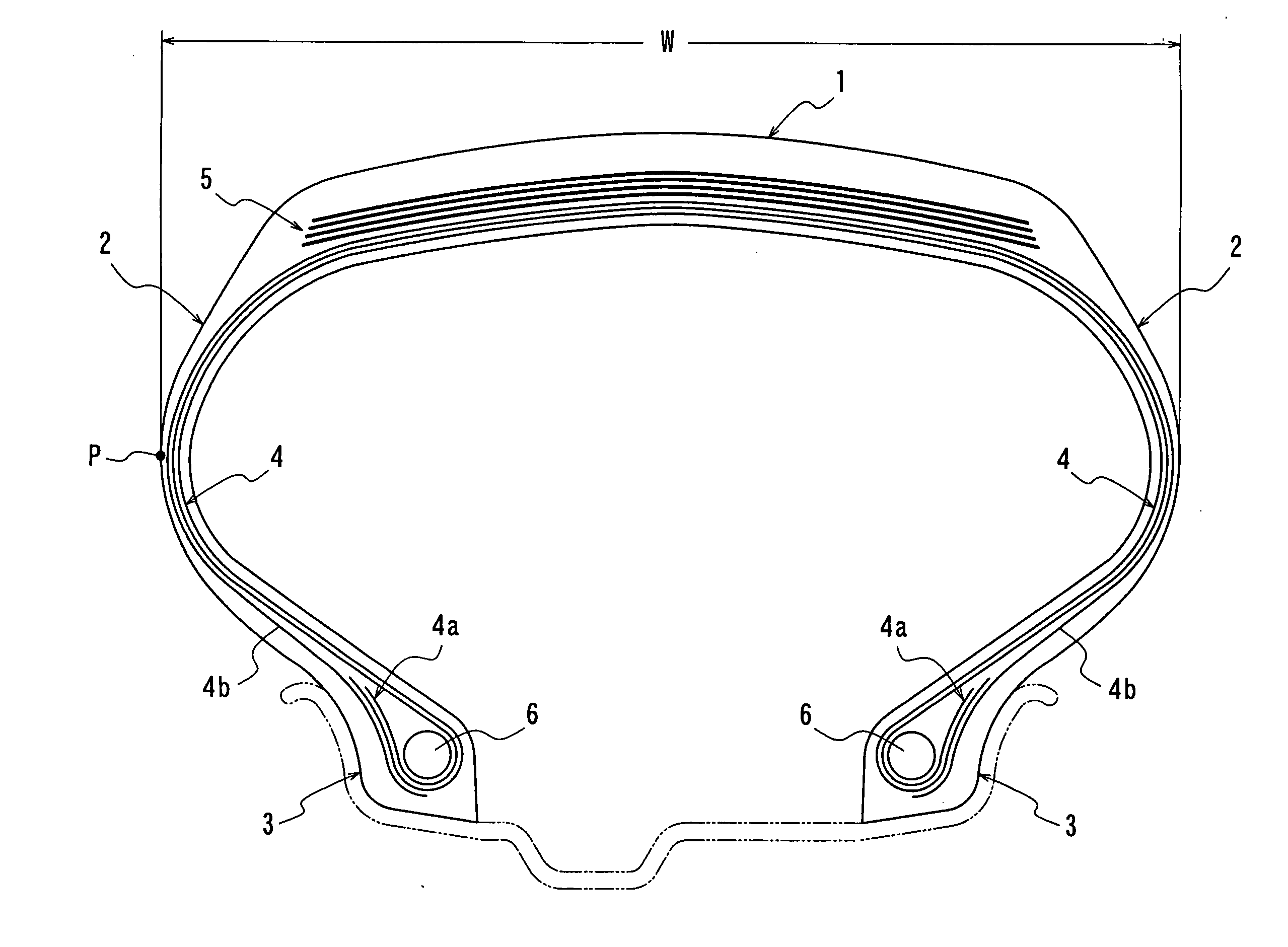Pneumatic radial tire for airplane
a pneumatic radial tire and airplane technology, applied in the direction of tyre beads, transportation and packaging, other domestic articles, etc., can solve the problems of obstructing the further weight reduction of tires, tire production, and difficult to remove the slack of the carcass, and achieve the effect of high tension
- Summary
- Abstract
- Description
- Claims
- Application Information
AI Technical Summary
Benefits of technology
Problems solved by technology
Method used
Image
Examples
Embodiment Construction
[0021]FIG. 1 is a diagrammatically cross-section view of an embodiment of the pneumatic radial tire for airplane according to the invention. In FIG. 1, numeral 1 is a tread portion, numeral 2 a pair of sidewall portions continuously extending inward from side ends of the tread portion 1 in a radial direction, and numeral 3 a bead portion continuously arranged at an inner peripheral side of each of the sidewall portion 2.
[0022]Also, numeral 4 is a radial carcass 4 comprised of at least two carcass plies toroidally extending between both the bead portions 3, two carcass plies in the illustrated embodiment and reinforcing the portions 1, 2 and 3, and numeral 5 a belt arranged on an outer periphery of a crown portion of the radial carcass 4 and comprised of plural layers, four belt layers in the illustrated embodiment. In the pneumatic radial tire for airplane according to the invention, a belt protection layer (not shown) may be arranged between the belt 5 and the tread portion 1. The ...
PUM
| Property | Measurement | Unit |
|---|---|---|
| Temperature | aaaaa | aaaaa |
| Temperature | aaaaa | aaaaa |
| Force | aaaaa | aaaaa |
Abstract
Description
Claims
Application Information
 Login to View More
Login to View More - R&D
- Intellectual Property
- Life Sciences
- Materials
- Tech Scout
- Unparalleled Data Quality
- Higher Quality Content
- 60% Fewer Hallucinations
Browse by: Latest US Patents, China's latest patents, Technical Efficacy Thesaurus, Application Domain, Technology Topic, Popular Technical Reports.
© 2025 PatSnap. All rights reserved.Legal|Privacy policy|Modern Slavery Act Transparency Statement|Sitemap|About US| Contact US: help@patsnap.com



